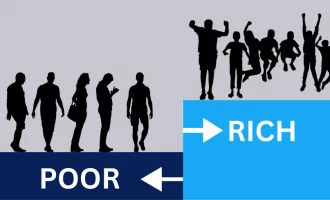Learn About The Main Stages to Editing a Book
By TOI Desk Report
April 29, 2022
Update on : April 29, 2022

Before any book gets to a publisher or even is to be self-published, it needs to be edited. Poorly edited or unedited books cannot get book deals. Worse still, many readers tend to avoid self-published books with low-quality. Most editors at traditional publishers are also usually very busy and may not have enough time to edit all the books they receive. This is the reason why they prefer to deal with books that are almost ready for publishing.
Remember that self-published books can be published to the standard the writer chooses. Therefore, if this standard is high, then the book needs to be professionally edited. Many writers prefer to hire the book editors in Australia to make sure their books can be the best on the market. In this article, you will learn about the main stages to editing a book.
Editing a book
The stages of editing need to move from the largest part to the smallest. The first passes at the manuscript have to assess the entire book. And, the later passes focus on the page, chapter, paragraph, sentence, line, and word. Taking this strategy of going from big to smaller areas can be the efficient way you can improve your manuscript and even prevent you from wasting money and time.
When people talk about editing, they may not know of the various types and when they should happen. As a result, a writer can sometimes ask for a form of editing when their book is not even ready or pay for editing services randomly with no idea of when the editing process can be complete.
For example, having a structural edit on a comic graphic novel that has been copyedited can be a waste of time. This is because the outcome of the earlier edit cannot survive a structural edit, meaning you still need to have another copy editing once the structural edit is done.
Proofreading a comic graphic novel that still has many problems in the chapters and can benefit from line edits or a structural edit is simply not good enough. The novel can still have bigger issues that need to be addressed, and may not have grammar and spelling errors, too.
If a writer doesn’t agree with the assessment of an editor on what should be done, the editor can or cannot agree to carry out the editing the writer has asked for. This can be a problem, but it’s the writer’s book and their decision. While the writer pays for the editorial services, it can seem unethical for the editor to agree to handle the tasks they believe cannot benefit the book.
Perhaps, the largest expense for an author is editing. The best cover or great marketing cannot save your book if it’s not ready to be revealed to your audience. On the other hand, a polished book can please readers regardless of whether or not the cover is adequate.
Stages of editing
It’s a good idea to leave time at least a couple of weeks instead of a few days between writing and editing periods. This can allow you to get back to the script with fresh eyes. Remember that you need to be objective when you get back to the manuscript for editing.
Self-editing can save you time and money before you decide to hire a professional editor. Many seasoned writers and editors agree that self-editing after feedback from your early readers can significantly lower the kind and amount of changes you need to make to your manuscript, so it can reduce your expenses.
By the time you decide to get a professional editor, there is a chance that you may have already finished your book before publishing it. A professional editor can focus on some areas that you cannot see due to your familiarity with the text. That said, the stages of editing include the following:
Structural editing
This stage of editing focuses on the entire book by looking at its strengths and weaknesses as well as how it can be upgraded. The editor tries to assist you to get closer to your overall vision of the book. For example, the manuscript assessment can be part of structural editing.
This means an editor can look at your story, plot, and characters or even the thesis or the central argument. When doing this, an editor considers whether the story can appeal to its target market. Ideally, if the story is compelling and coherent or whether or not the characters are engaging, then the editor can figure out what to do to improve these things.
The editor can also consider the voice, pace, and style of the book so that they can suggest what needs to be addressed, such as overly complicated explanations, a slow middle section, or insufficient word-building.
Line editing and copy editing
Both these forms of editing tend to look at the paragraphs, word level, and many more, so they need to be done together. If you are confident of your style or the text is in great shape, then a line edit can be enough. On the other hand, if the writing is not good enough or sentences get a bit tangled, a heavier edit can be required.
Line editing is all about making sure that the text flows smoothly and fixing some rough areas that may prevent your audience from reading the book. In other words, an editor can ensure that you remove repetition and unclear sentences.
Copy editing also fixes spelling, grammar, and punctuation. It’s worth mentioning that both stages of editing handle consistency. For instance, line editing can correct minor inconsistencies while copy editing deals with formatting and makes sure that capitals or hyphens are used consistently. Read more about PDF Drive.
Proofreading
In most cases, many editors learn copy editing and proofreading together because they both deal with almost the same topics. When it comes to proofreading, it refers to the last check of the text before you send it for printing and publication.
Regardless of whether or not there was careful editing at every stage, there can be some errors in the story. This is why proofreading gives you the chance to uncover them.
















